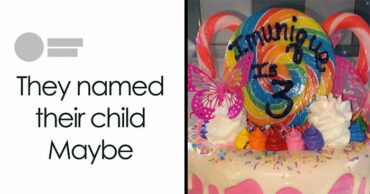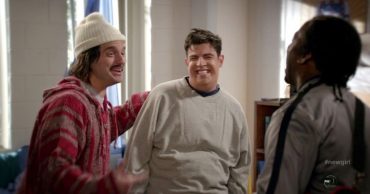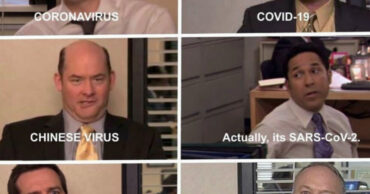
Through the first four episodes of The Strain, the best moments have come when nobody is talking, and the show’s focused on the visual aspect of its horror, using both digital and practical effects to unsettling results. However, each and every one of these moments – which are few and far between in “It’s Not For Everyone” – is brought down the moment anyone opens their mouth, spitting out cliches and tropes at such an accelerated rate, CBS’s Monday night comedies look nuanced in comparison. And when that sentiment is tripled anytime the words “female” or “minority” is used, it makes for the wrong kind of unsettling watch, an hour of drama titled after a woman’s weak will, and packed to the brim with Mexican gangster stereotypes and other female characters generally acting like idiots.
The worst material obviously comes from Nora, a woman whose ENTIRE CAREER is based in disease management, but can’t take the singular image of a decapitated body of a non-human. Nope, when a little girl gets murdered, Nora all of a sudden becomes too soft for the job she’s taken on, spitting one of the dumbest lines of dialogue I’ve heard this year: “I’d rather turn into one of these things than kill them!”
I’m paraphrasing, but you get the point: it just makes no sense, the show pushing Nora to the sidelines so that the “hero” of the story can speak down to her like a little girl, put her in her place, then go on his epic quest to save her and everyone else. Nora is given no agency as a character (in the show’s Wiki page, she’s even listed as a “caring” biologist – seriously, guys?): Ephram plays the condescending “I love my wife, but I need you” card when they’re working in the lab, as if to convince her that if she stood by his side in her womanly place, Ephram would be able to achieve the life balance he clearly hasn’t earned, all while saving his family and the entire world around it.
It just makes her character seem stupid and overly emotional, as if her womanly capacity to be compassionate only makes her a weaker person in the sight of the strong men around. This sentiment carries over to Ansel’s wife, who is too Christian to kill her husband, but has no qualms feeding a whiny neighbor to him minutes after bawling and talking to her dead dog (murdered by Ansel when he craved a meal, I’m presuming). Once again, a woman’s emotions turn her into an idiot: only seconds after crying her eyes out at the sight of her blood-crazed husband (who is becoming a parasitic, virus-worm infected vampire), she’s feeding the neighbor to him with squeamish glee, complete with a lovely little visual of the barn after she closes the door, trapping the neighbor in with the blood-hungry Ansel. At least in this case, the female character is given the power of silence (for the most part), which removes the need for the script to insert another round of awkward dialogue, instead letting the simple visuals of her prayer beads and desperate faces speak for the cliche character traits being attached to her.
If anything, Ansel’s wife is able to be “troped out” silently: for Nora and Gus, this isn’t so quick and painless. Gus’s sequences in this episode are so laughably bad, it feels like they are scenes pulled from some straight-to-DVD movie about a Mexican thug and his predictable problems of having a shut-in, religious mother, a drug addict brother, and an overweight friend who cooks spicy food and always has an illegal way of making money (which in this case, is less than believable: would these two “gangsters” risk their freedom for a $1,000? I think a brand-new Mercedes SUV is worth a little bit more than that, even on the black market). There isn’t even an attempt to do the whole “gangster tries not to live that life, and gets pulled back in” bit: after returning the clock his brother stole to Setrakian (unrelated question: how the f*** did he end up at that house in the closing scene?), Gus goes and steals a car without a second thought, getting mouthy with Marlo Stanfield (Jamie Hector, why would you do this to yourself? They gave your character gold teeth, for f*ck’s sake) before heading home to do his normal round of brother-shaming and reluctantly lying to his mother about his gang-banging. And this is del Toro’s attempt to have non-stereotypical Latino characters in material with his name attached to it? Yikes.
“It’s Not for Everyone” is really just an unpleasant hour of television, from the horribly-written dialogue (led by Jim’s “confession”, and anything Nora says) to the show’s inability to do anything but paint white men as powerful, forward-thinking people in a sea of dumb minorities and weak-willed women. Are there promising moments in the show’s story moving forward? I suppose there might be a couple of them littered about (the vampire autopsy being the most obvious, and most effective), but the glaring issues with how the show writes its characters only grows larger by the week, especially with an entire episode pointing out how ineffective and predictable two women and one Mexican can be, as “It’s Not For Everyone” turned out to be.
[Photo via FX]
 Follow Us
Follow Us





